Whether you are an experienced product manager starting a new job or an entry-level product professional, your first 90 days are critical.

Not only do they allow you to make a great first impression — and let’s face it, the first impression lasts — it’s also the time when the expectations of you are lowest. You’ll also have the most free time and capacity that you’ll ever have.
In this article, you’ll discover how to make the most out of your first days as a product manager in a new company.
Your primary objective is to learn as much as possible. Learn about the product, the company, the organizational structure, and more.
Don’t take the learning time for granted. After a few weeks, once you are up to speed, there’ll always be new priorities, experiments, and problems to be solved.
You probably won’t have time to sit down for a few hours and patiently read product documentation, and any gaps in knowledge can bite you in the butt. Seriously, make the most out of these quiet days:
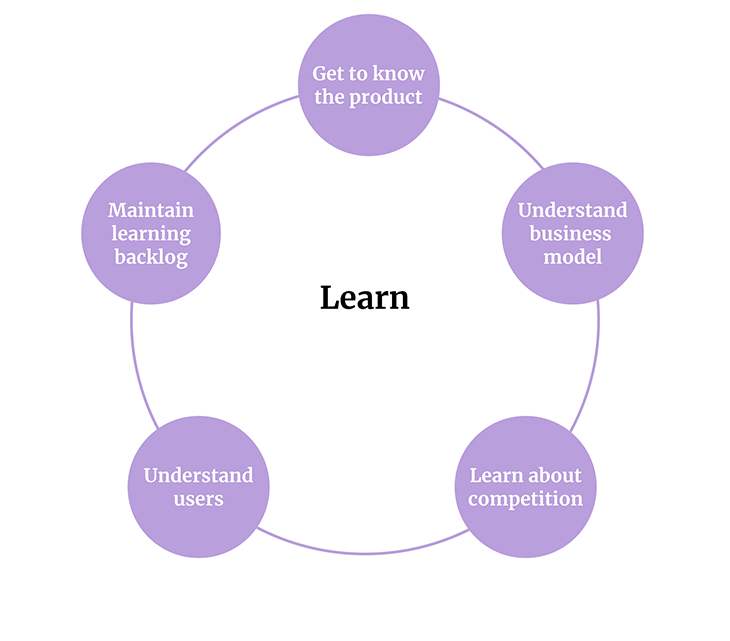
In your first days, you will have hundreds of questions and doubts. You won’t get all the answers immediately, so make sure you write these questions down somewhere.
First, you want to avoid the situation where you finally meet with a person responsible for the area that interests you, and you don’t remember what questions you had. And it always happens. An organized and ideally labeled list of doubts and questions makes the whole learning experience more effective.
It will also keep you focused on the most critical areas. There’s a high chance you won’t learn everything you want in your first days. That’s okay. Keep your learning backlog in a prioritized order and ensure you get a hold of the most critical areas at some point.
If done well, whenever you have an hour or two available, check your backlog and figure out how to learn things that are on top of it:

The product itself is the most important thing you should learn in your first days. Just knowing what it is and how it works is not enough, understand it inside and out. Here’s a list of questions you should be able to answer:
If it’s a complex product, 90 days might not be enough, but you should still understand it as much as possible. Read the docs, play with the product yourself, and talk to designers and developers. This knowledge will be fundamental for kickstarting your new role.
Make sure to have a clear picture of your user and buyer persona after the first weeks. You can’t be a successful product manager if you don’t know who you are building for.
Ideally, talk to your users directly. Schedule one-on-ones, understand why and how they use the product and in what context they do so. If you can’t, then check critical design artifacts such as the user persona, user journey, and empathy map. Also, reach out to product designers, sales representatives, and customer service specialists — they’ll all provide a unique view of your users.
A crystal clear picture of your user and buyer persona is a must.
There’s a high chance you are not the only player on the market.
Understanding competitors will help you understand how your product differs from competitors. It will also help you get the hang of the industry itself.
Understand who are key competitors, what users they target, and how their value proposition differs from yours. Focus on those targeting similar customer segments in a similar market category.
I usually map competitors using a strategy canvas. It clearly shows how different competitors compare to my product and gives a picture of an overall industry shape:
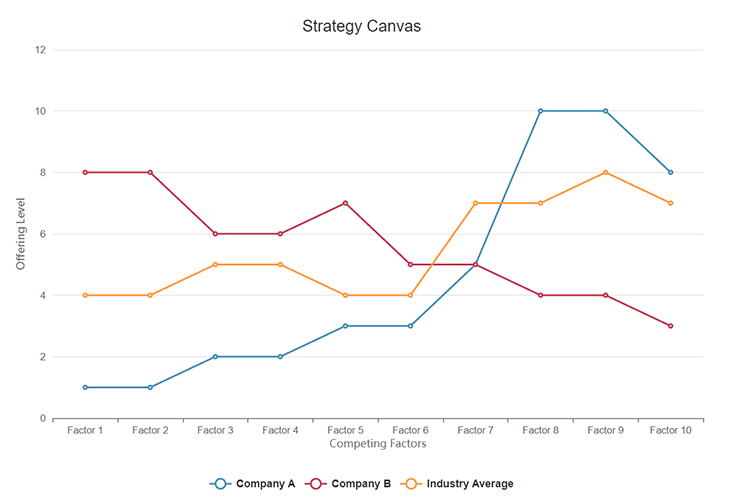
Don’t limit yourself to other companies and products, though. Try to understand all alternatives your users have for using your product. Sometimes, a customer’s alternative to using your product is for them to use a pen and paper and do it themselves. Intuit, a financial software company, once said that their biggest competitor isn’t another tax software, but pen and paper — because 70 percent of their users used a pen and paper to file their taxes.
Another example alternative for your customer could be hiring an intern to do the task your product could do for them. As a result, a potential intern might be a more significant threat to your product than the biggest company in the industry.
To be an efficient product person, you must understand how the business works. After all, products don’t live in a vacuum, they are a part of a business model:
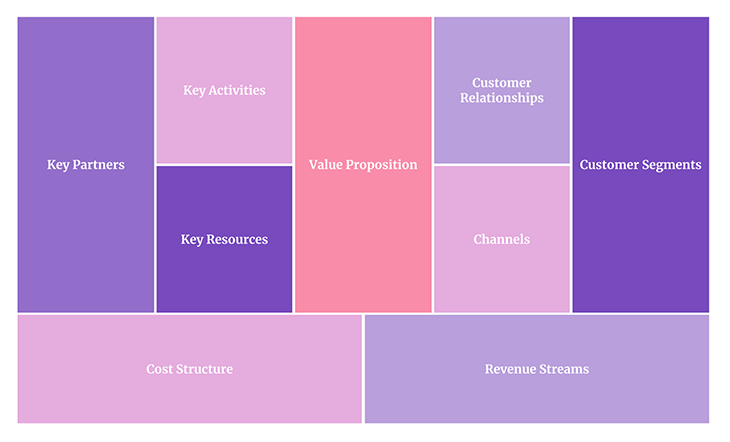
Understand key areas such as
The product you manage is a part of the bigger picture. Understand the bigger picture.
Relationships are everything for a product manager. They just make life easier.
If you’re on good terms with stakeholders and coworkers, you’ll easily get buy-in, say no, or influence the product and company’s vision. Even the most incredible product ideas are worthless if you cannot get buy-in:
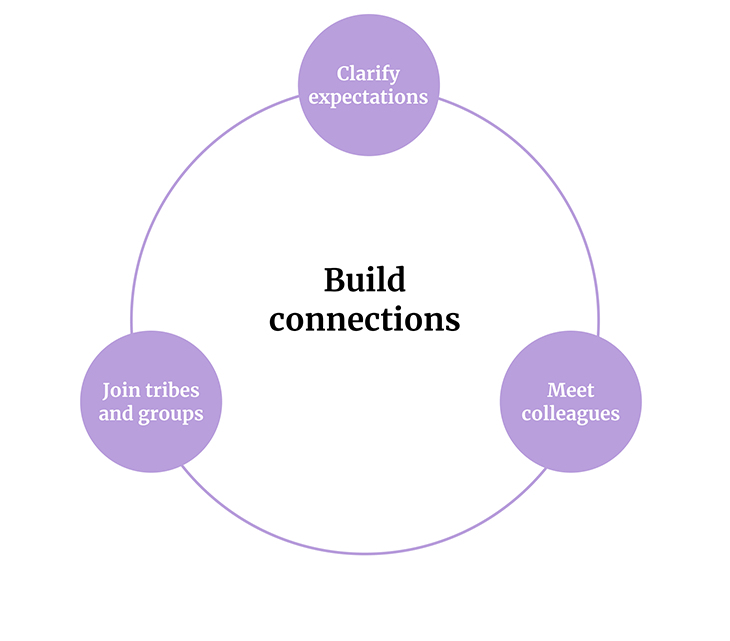
Make sure you are on the same page with key stakeholders regarding expectations.
Don’t fall into the trap of adopting the old company’s policies. Companies have different processes and the relations between roles also differ. Get clarity on who does what and who needs what as soon as possible to avoid costly mistakes.
Also, ensure you are on the same page with your direct manager regarding their expectations of you during the first weeks on the job.
Meet with as many people as possible. A quick 30-minute coffee chat will do just fine.
Informal meetings can include your team, other product managers, marketing, sales, customer representatives, directors, and more. Ask your direct manager to guide you on whom to approach first.
Breaking this initial ice is critical. Whenever you have a problem or question, you will no longer be reaching a completely stranger person.
Others will also start seeing you as a person rather than a newbie. Once you start recognizing faces around you, the work will be both easier and more enjoyable. Plus, it will give you a hefty dose of perspective. You’ll start feeling the room better: who is the energetic one? Who is the pessimistic one? Who is the complainer?
It will go a long way when it comes to later stakeholder management.
Some companies will have employee groups. Sometimes they’ll be related to work (say, an experimentation practice group) and sometimes they’ll be general ones (say, LGBTQ+ employee resource group).
While joining them in the first week or two might be overkill since you are probably already overloaded with information, do it sooner than later. The truth is, the longer you wait, the higher the chance you’ll push it back due to other priorities and work objectives.
Onboarding to an internal group often takes time on its own. Do it while you have spare capacity.
Product managers are hired to make an impact on the product and business. The sooner you show you can make the work you were hired to do, the better and longer-lasting impression you will make:
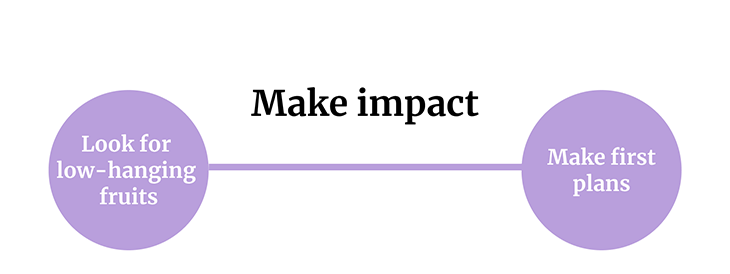
While the first weeks might not be the best time to make big bets or launch strategic initiatives, you have a competitive advantage as a newcomer. Use it.
Coming with the weight of your unique experiences and having an unbiased, fresh view, you are well-positioned to notice low-hanging fruits — improvements that are obvious to you but hardly visible to anyone else.
Look out for them from day one. Were you a copywriter in your previous career? Look for potential copy improvements. Are you a conversion expert? Try to find obvious (to you) mistakes in current checkout flows.
Every product has multiple low-hanging fruits. The longer people work on a product, the harder it is to spot them. It’s your opportunity to shine as a newcomer.
Before the 90 days pass, you should have planned a short-term roadmap of initiatives and experiments.
You are not yet a product expert and you probably can’t promise you’ll double the impact of the product. But you should already have some vision of how to do so. By showing people around you that you already have a solid direction and plan for the product, you send a strong signal that you know how to get the stuff done.
Sorry, the “I am still new here” protective umbrella is no longer there. It’s time to roll up your sleeves and start delivering outcomes!
The first 90 days of your job as a product manager are critical. They’ll help you kickstart your role in a new company if done well. If you spend your first months ineffectively, it’ll take a long time to recover:
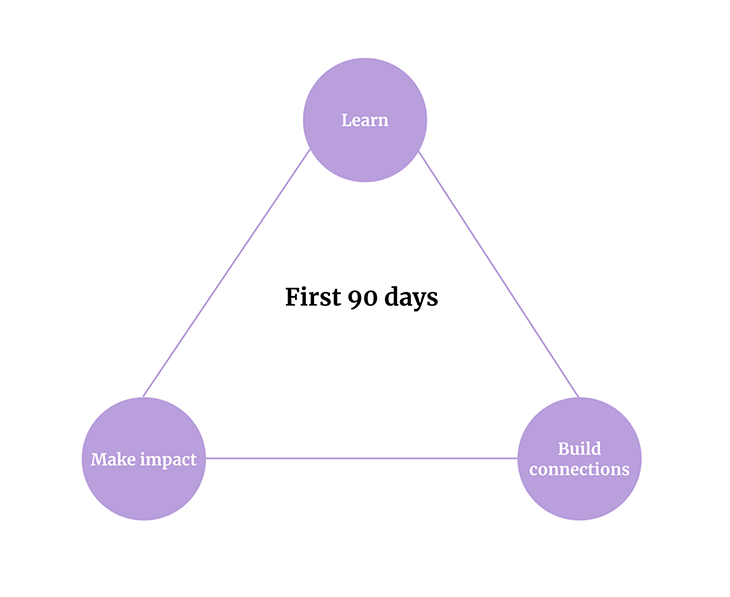
There are three core areas you should focus on during your first months:
Nail these three areas, and you will be well-equipped to achieve amazing things in your new role.
Featured image source: IconScout
LogRocket identifies friction points in the user experience so you can make informed decisions about product and design changes that must happen to hit your goals.
With LogRocket, you can understand the scope of the issues affecting your product and prioritize the changes that need to be made. LogRocket simplifies workflows by allowing Engineering, Product, UX, and Design teams to work from the same data as you, eliminating any confusion about what needs to be done.
Get your teams on the same page — try LogRocket today.

Christina Valls shares how her teams have transformed digital experiences at Cedars-Sinai, including building a digital scheduling platform.

Red-teaming reveals how AI fails at scale. Learn to embed adversarial testing into your sprints before your product becomes a headline.

Cory Bishop talks about the role of human-centered design and empathy in Bubble’s no-code AI development product.

Learn how to reduce mobile friction, boost UX, and drive engagement with practical, data-driven strategies for product managers.